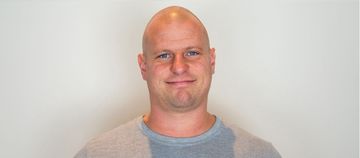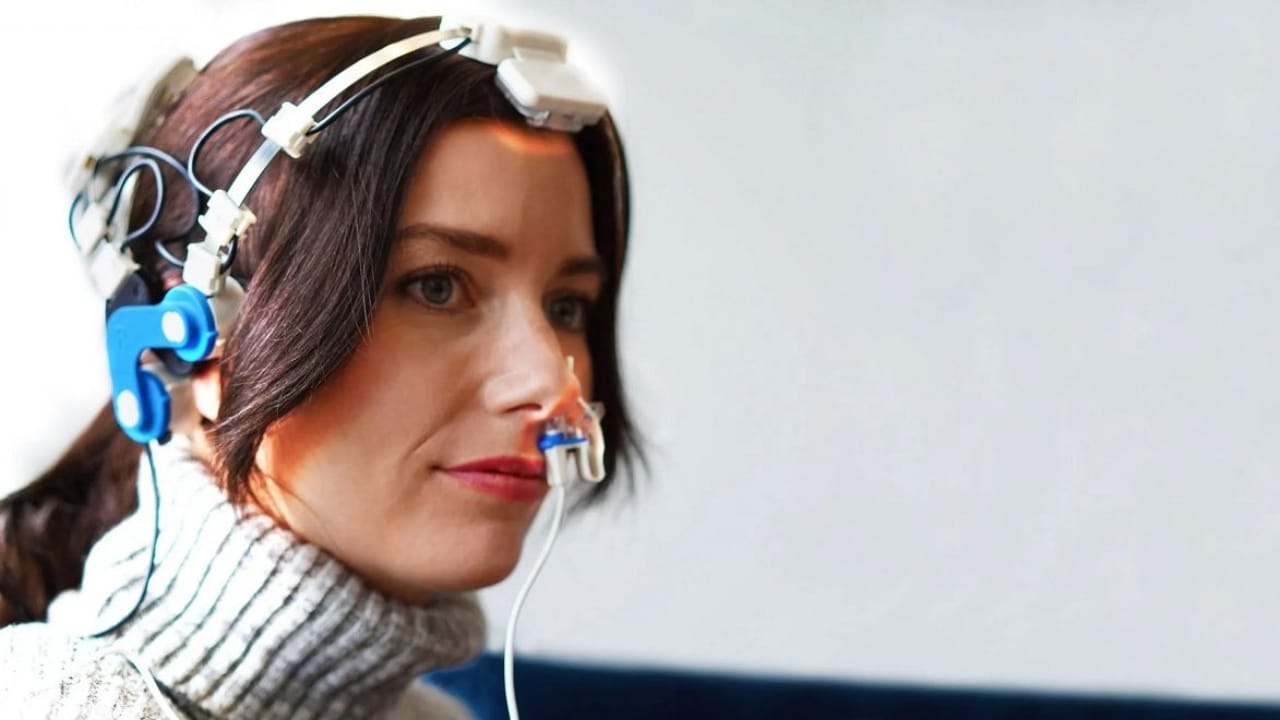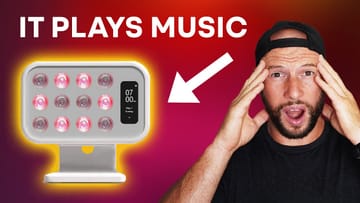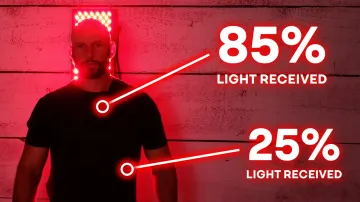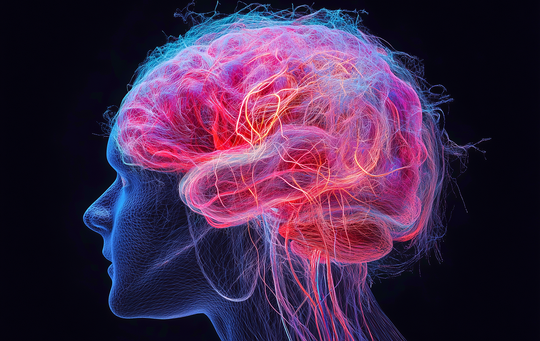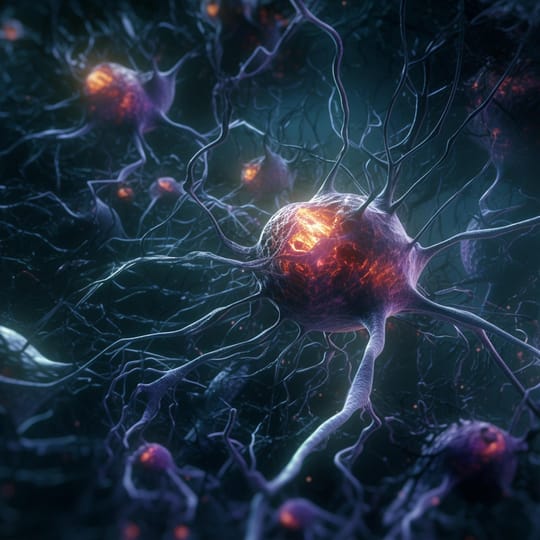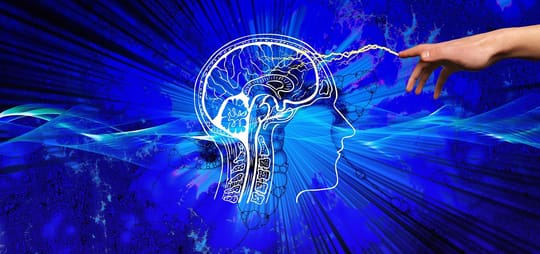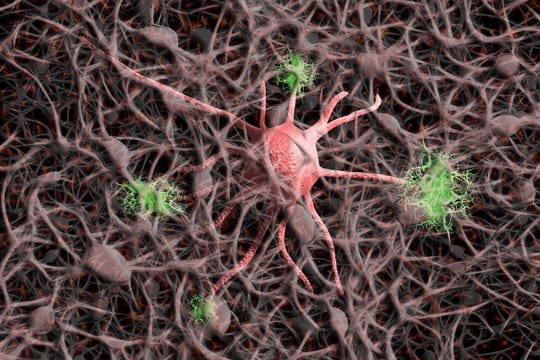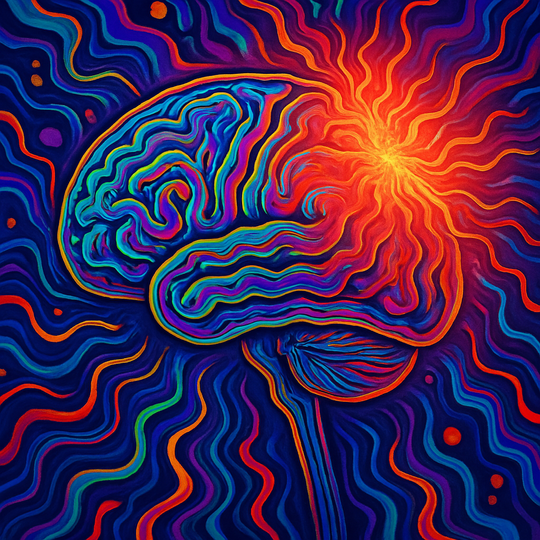In this blog post, I'll answer the question "Does Vielight work?" by taking a deep dive into the Vielight science. Several fascinating articles have been published using the Vielight products that are mainly aimed at red light therapy for the brain and systemic red light therapy.
If you're time-poor, you can read the summary of this article below. If you're interested in taking a deep dive into the Vielight science, then continue reading below the summary where I've also included a table of contents for this blog post.
Let's go:
Vielight Science Summary
- The science on different Vielight products is almost unanimously positive across the board in eight studies I've included in this blog post. These studies were categorized in Vladimir Heiskanen's spreadsheet, that contains 7,000+ light therapy studies.
- For different conditions, such as Autism, Parkinson's Disease, Alzheimer's Disease, anxiety, depression, and even Gulf War Illness, evidence exists that different Vielight products yield improvements. I've broken these studies down into lots of detail in the full blog post.
- Because the Vielight shows improvements for various conditions, it has become highly likely that these devices can be used to promote brain health in general. Evidence is a bit better for countering conditions than it is for improving health in already healthy study participants.
- Ideally, you'd wish a lot more studies were available on Vielight´s products, such as more Randomized Controlled Trials (medicine's gold standard) and with greater numbers of participants. However, Vielight cannot be responsible for that lack of studies because funding is prohibitively expensive.
- I'll keep updating this document over time when new studies emerge and update my conclusions.
- I can't tell you which Vielight device to buy because it really depends on the circumstances. And, despite preliminary evidence that Vielight devices have great effects for health, we don't have studies exactly comparing different Vielight devices. So, besides the outcomes of studies, the accounts that customers make of the Vielight devices becomes more important for making a choice.
- The Neuro Duo is arguably a great overall choice for brain health and the Neuro Duo and X-Plus combination (an intranasal device) is arguably even better (discount code ALEX10 saves you 10%). For less expensive options, there are the Neuro Alpha and Neuro Gamma, if you want to target brain health specifically. For systemic effects through the blood flow in the nose, there are the Vielight MIP and Vielight X-Plus devices. If you want to go crazy and customizability for red light therapy pulsing, for instance, consider the Neuro Pro, but that option is probably best for healthcare professionals.
- One small caveat I have is that despite the great evidence, I do think Vielight can be improved. Mainly, the treatment area of the LED may be improvable, so that a bigger area is treated with the 100 mW/cm2 dose
Does Vielight Work? Recent Vielight Studies Broken Down
Below I'm breaking down all the available VIelight studies. You may think that with 5-10 studies or so, not many have been published. But given the cost of setting up medical research and there not being a strong financial incentive to test a Vielight as opposed to a pharmaceutical drug, the research that has emerged is really impressive.
I'm therefore breaking down these studies in somewhat more detail than I'd normally do to really give you a deep dive. Basically, I'm considering the question I asked in the introduction of the article, "Does Vielight work?"
Let's start with the beginning:
Study 1: Impressive Benefits For Alzheimer's Disease: Better Functionality, More Blood Flow In The Brain, And A Changed Activation Pattern
A study published in 2019 looked at the results of using a Vielight device for Alzheimer's disease (1; 2). Alzheimer's is one of the most promising intervention routes of red light therapy or "LLLT" (Low-Level Laser Therapy) (3; 4; 5; 6).
Patients with mild to moderate dementia were included in the 12-week study. The eight participants in total were split up in two groups: usual care and an intervention with the Vielight. Participants are 80 years old on average and most of them are on medication. The researchers used the Vielight Neuro Gamma device.
During the first week, week six, and week twelve, the Alzheimer's Disease Assessment Scale-cognitive (ADAS-cog) and the Neuropsychiatric Inventory (NPI) questionnaires were used with participants. That ADAS scale has been used for decades and seems to be highly valid for predicting mild cognitive impairment and Alzheimer's disease (7; 8; 9). THe NPI is also valid and reliable to use for measuring behavioral changes in people with Alzheimer's Disease (10; 11).
Also, an MRI scan was taken of the participants at the start of the study and after twelve weeks. At that first week (baseline), both groups didn't differ in demographic or clinical characteristics. After twelve weeks, however, all outcomes improved in the group of four participants that received the red light therapy with the Vielight Neuro Gamma. So, the outcomes on the ADAS and NPI scale improved, meaning that the progression of the disease was inhibited or even reversed and that the functionality of the participants in their daily lives improved compared to the control group that didn't recieve red light therapy.
Blood flow in the brain also improved, as measured with the MRI. And, the connectivity between two important brain areas, the "posterior cingulate cortex" and the "lateral parietal nodes" within the "Default Mode Network" in the brain improved. That "Default Network" is an activation pattern of the brain when you're basically doing nothing. The activation pattern of people with Alzheimer's Disease is changed compared to healthy people (12; 13; 14; 15; 16). Normally, that Default Mode Network is more active during the absence of cognitively demanding tasks. That Default Mode Network activation pattern in the brain is one of the areas that is heavily affected by Alzheimer's Disease.
These outcomes are extremely promising.
Also, the full text of the Vielight Neuro Gamma study claims that the near-infrared light can penetrate up to 40 millimeters, so 4 centimeters into the brain (2). I do believe that conclusion is generally true (17; 18; 19). This fact is very important for justifying the Vielight Neuro Gamma.
Now let's look at the most exciting part of this study for me - the dosing protocol of the Vielight Neuro Gamma. You can see a picture of this device below:

As you can see, there's light emitted up the nose, onto the back of the brain, and at the front of the brain. The LEDs at the back of the brain have a power output of 100 mW/cm2. The LEDs at the front of the brain have a power output of 75 mW/cm2 and the ones up the nose of 25 mW/cm2. Pulsing is also used at 40 Hz with a duty cycle of 50%. The duration of the red light therapy for the brain is 20 minutes and participants were treated three times weekly for the aforementioned twelve weeks.
For nerds, the Joules delivered at the back of the brain is 60 Joules, with at the front of the brain it's 45 Joules, and through the nose (which has systemic effects on the body) it's 15 Joules.
This exposure pattern is completely different from the Neuradiant by Neuronic, for instance, which uses a 10 mW/cm2 dose all across the brain. Both approaches are interesting to me. But with the very focused approach of Vielight you can expect deeper penetration, which is especially necessary for the skull. However, you won't equally affect all areas of the brain as the Vielight Neuro Gamma at least delivers light locally (that should still have systemic effects).
Also, looking closer at the study, what suprised me is how badly the control group deteriorated over time. Check the table 3 below for that outcome:

As you can see, with care as usual (the UC group), the ADAS and NPI scores deteriorated rapidly over time. Obviously, something like that is to be expected of older people that have an average age of 80 with Alzheimer's Disease. However, if you look at the group that received the red light therapy, the PBM, they improved their numbers as much as the other group deteriorated over time. The improvements in the Photo-Bio-Modulation (PBM) group in NPI were even double (20+ points) that the UC control group lost (about 10 points).
Blood flow in the brain - which you can understand through the perfusion numbers above - are also much better in the PBM group than the UC group. Higher numbers are better in this case, as it signifies better blood flow. So, one of the most frequently touted benefits of red light therapy for the brain - better circulation and oxygenation - is almost certainly correct if the 810nm wavelength is used properly.
(If you're curious, I created a huge 810nm cheatsheet for red light therapy showcasing the scientific evidence for all of the wavelength's effect).
The researchers quote another study that describes many of the improvements participants received during this process:
"Saltmarche et al.8 did not formally quantify behavioral symptoms; however, they documented qualitative feedback from the patients and caregivers, noting improvements in quality of life, functional abilities (i.e., decreased incontinence and increased mobility), better sleep, fewer angry outbursts, and less anxiety and wandering after the PBM treatments." (2).
So, it's not just questionnaires that improve with transcranial (through the skull) red light therapy for the brain. Real-life outcomes as described by caregivers improves as well - although that's a bit of a qualitative approach not based on the gold standard of medicine, randomized controlled trials. No side effects are noted either, contrary to many prescription medications that people are on.
Now, not everything is perfect though. The researchers themselves note that they'd love to carry out this research with bigger groups of participants. Including more participants in the study would lead to more statistical power and to more validity. The current study I'm describing is only a pilot study, meaning that they're investigating whether the approach is viable in the first place. For a pilot study, very few participants are frequently recruited.
Other limitations are the the participants' Alzheimer's Disease wasn't independently verified with a diagnosis and that there wasn't a sham control group. With sham control, the control group would also receive a Vielight device that may shine a light on the brain but without the power density necessary for the correct results. Participants in the control group would still assume that they'd get therapy with that intervention.
Overall though, I'm extremely impressed about this first Vielight study. Let's explore the second one:
Study 2: The Vielight Neuro Gamma For Children With Autism Leads To Impressive Improvements As Well
Secondly, there's another study using the Vielight Neuro Gamma from May 2022. The Neuro Alpha was also used. In this case, children with autism are studied (17; 18). The latest scientific consensus on autism or "Autism Spectrum Disorder" (ASD) is that the causes are multifactorial (19; 20; 21; 22; 23). Both genetic and environmental factors play a role therein.
ASD, moreover, is a developmental disorder primarily originating in the nervous system and brain. Social interactions, behaviors, executive function, sleep, and other domains are often impaired. The number of ASD cases has risen dramatically in the last few decades. There's no way to resolve autism, however, and symptom management can be complex. Stress, anxiety, epilepsy, and depression risk also go with ASD, potentially leading to more problems down the road.
Early intervention in childhood can also improve people with ASD's functioning in society and social life. That's where red light therapy with a Vielight comes in here. The current study used the Vielight Neuro Gamma and Alpha once more with 810n light (if you want one go HERE and use code ALEX10 for a discount). The pharmaceutical drugs commonly used for autism have side effects such as weight problems and sleep quality losses, so alternatives to such interventions are welcome.
In the study, 21 participants were included in total. Thirteen of these participants are male and eight are female. The average age of the participants is 9.1 years old, ranging from five to 15 years old. The participants either received a Vielight Neuro Alpha or Vielight Neuro Gamma. The Alpha has pulsing at 10 Hz and the Gamma at 40 Hz. The functioning of the participants was evaluated at the start of the study, after three months, and after six months. The researchers used the following tools to monitor the children:
"Childhood Autism Rating Scale (CARS), the Home Situation Questionnaire-ASD (HSQ-ASD), the Autism Parenting Stress Index (APSI), the Montefiore Einstein Rigidity Scale–Revised (MERS–R), the Pittsburgh Sleep Quality Index (PSQI) and the SDAG, to evaluate attention" (18).
The final result? The overall CARS rating went down, meaning that the severity of the autism decreased during the study. The CARS seems to be a very valid, reliable, and frequently used tool to measure the severity of autism (24; 25; 26; 27).
How?
Let's explore that result step by step. First, in the study's introduction, the researchers note that red light therapy for neurodevelopmental disorders has become more prevalent and popular in recent times (18). Several different substances can absorb the light that travels through the skull. Examples here are water, different types of hemoglobin connections, cytochrome C oxidase in the mitochondria (the energy-creating factories of your cells), myoglobin, melanin, and others.
The researchers also correctly state that red light therapy has worked for cognition for many different purposes, such as cognition, energy metabolism, post-stroke recovery, traumatic brain injury, and depression. So the choice to investigate the effects of ASD are understandable. However, the researchers do not that in a previous recent study, participants had a slight side effect - a headache. Insomnia and an irritable mood are other reported side effects in red light therapy for the brain studies. Overall though, the safety profile is extremely safe.
Next up, the 21 young participants. What surprised me most was that many of these participants were on nutraceutical medications. I didn't see any prescription drugs - instead, I saw omega-3 fatty acids, melatonin, probiotics, and phosphatidylserine (which lowers stress). Great, because if these substances work really well and other prescription drugs like stimulants for executive function can be avoided, that's a big win. Most of the kids also had speech therapy and cognitive behavioral therapy (CBT).
WIth regards to the devices used, kids either used a Vielight Neuro Alpha or a Vielight Neuro Gamma at any day. The main difference is that the former has 10 Hz pulsing while the latter has 40 Hz. The 10 Hz stimulates alpha brainwaves and the 40 Hz pulsing stimulates gamma brainwaves. The alpha brainwaves are more related to a relaxed creative focus while the gamma brainwaves are more associated with intense cognitive activity such as working memory and attention.
The power output of both devices is the same as in the previous study. The LEDs on the back of the head emit 100 mW/cm2, 75 mW/cm2 on the front, and 25 mW/cm2 through the nose. The total dose delivered to these spots is 15-60 Joules once again. The children used the Vielight devices five times weekly for six months. Many different questionnaires were taken, including on sleep quality, different domains of autism as rated by the parents, and more.
Then, the following outcome on the CARS scale - measuring the severity of the autism - was accomplished:

CARS outcome in study from free full text of source: (18)
As you can see, there are improvements in the severity of autism over time, although the Y-axis of the scale might make you think the improvements are bigger than expected. In reality, the CARS score decreased by 1.5 points over a six-month period. The results were highly statistically significant though. Arguably, if you'd read the full text of the study, the non-CARS outcomes - so the other questionnaires such as the MERS and SDAG - were more impressive here.
Once more though, this study does have a few limitations. First, the number of participants is still meager. Secondly, there was no randomization nor the use of the gold standard of medicine, the randomized controlled trial.
Nevertheless, in the paper's discussion section, the researchers state that improvements have been found. Not only has the severity of autism decreased, but sleep quality has also improved, and attention has also improved.
The combination of the alpha and gamma devices is credited with yielding these improvements. The researchers write:
"It is likely, even if not demonstrable at the moment, that these effects are a consequence of the combination of the two protocols, alpha and gamma. Indeed, increased relaxation, a feature of the alpha protocol, would allow for a reduction in rigidity and sleep improvement, while enhanced cognition effect, an effect of the gamma protocol, would account for improvements in attentional functions."
No side effects were found in this study, moverover. So overall the Vielight Neuro Alpha and Vielight Neuro Gamma are great candidates for future research for autism.
Study 3: Vielight 810 Intranasally For Anxious Depression: A Promising Case Study
Next up, is a case study from 2018 that involves the effects of the Vielight 810 on just one participant (28; 29). If you're unfamiliar with case studies, just conceive them as a very elaborate n=1 study in biohacking. In the same way, you quantify the effects of different interventions such as supplements on sleep quality measured by the Oura Ring, researchers, in this case, measure how well a Vielight 810 works for alleviating anxiety and depression.
Simple right?
The Vielight 810 is an older Vielight model that's no longer sold on the Vielight website. Back then, that 810nm Vielight exclusively delivered 810nm light to the blood supply running in the nose and brain.
Recent new developments, such as the Vielight MIP, deliver 470nm blue light, 633nm red light, 655nm (with a laser) in addition to the 810nm light, leading to a far more comprehensive treatment approach. The light is pulsed at 10 Hz or 40 Hz at that Vielight MIP (code ALEX10 saves money too if you're interested).
But back to the Vielight 810 used in this study. The study concerns a 76-year-old woman with heart and blood vessel disease because of stress, depression, anxiety, and more. Emotional stress is frequently the cause of that heart disease.
The woman received a whopping 31 months of red light therapy using the Vielight 810 in this study to, hopefully, deal with this problem. Before using Vielight red light therapy, the woman had used different medications against major depressive disorder (which is a clinically diagnosed depression anti-psychotic, and benzos (for relaxation) mediation. These medications had dramatically improved the life of this women, who no longer had suicidal ideations. The patient herself was notified about the off-label use of the Vielight 810. Only later did the researchers decide to write an article about her experience.
The choice of the Vielight here for depression and anxiety is very well justified, in hindsight, as since then and before many studies have come out on red light therapy for depression and anxiety (30; 31; 32; 33; 34; 35; 36; 37). It's easier to talk from the perspective of hindsight though, but in this case, the choice of the Vielight 810 worked out wonderfully. Back in 2018, the researchers wrote:
"Because of the very limited evidence supporting the use of PBM for MDD and the uncertainty over the effective dose and best localization for light delivery, it was recommended to the patient to track her symptoms using self-report instruments."
Right now, that situation has changed for the better, although far from perfect.
To track her progress, the woman used several questionnaires related to depression and anxiety. And although the study was published in 2018, the woman's experiment already started in December 2014, so several years before publication.
The power output of the older Vielight 810 model was around 14 mW/cm2. Red light therapy pulsing at 10 Hz is used with a 50% duty cycle. The dose was applied for 25 minutes per nostril per day. The total dose ranged from 20 to 40 Joules in total.
Then, surprisingly, 22 months after starting with the Vielight 810, the woman started using the Omnilux New U device. I cannot find that device on the Omnilux website anymore, so I'm assuming it's an older model. That Omnilux device delivers 33.2 mW/cm2 of light to the forehead at the 830nm wavelength. Of course, if you're smart, then you'll start to realize that this is the precise setup that Vielight later developed with their Vieligth Neuro Alpha or Vieligth Neuro Gamma devices.
(Also, Alex has reviewed an Omnilux device such as the men's mask - the company seems to have rebranded more towards the beauty space now).
An area of almost 30 cm2 was treated with the Omnilux 830nm device. And surprisingly, the treatment time was 25 minutes as well. If I calculate the total dose it's 50 J/cm2, which is quite high but not excessive at all, especially assuming the light needs to move through the skull.
Overall, anxiety went down on a steady trend. The depressive symptoms stayed constant until the 830nm light was applied directly at the middle of the prefrontal cortex. No adverse effects occurred.
The overall functioning of the woman improved over time as well, as reported by her loved ones. Dread and fear, anxiety symptoms dissipated for the patient directly after the red light therapy was applied. The anxiety already went down when the VIeligth 810nm was used alone before the Omnilux device was added.
Study 4: The Vielight Creates Brainwave Entrainment Paired With Systemic Effects Across The Brain
Brainwave entrainment, or "neural oscillations", can be created with the Vielight device (30; 31). Only a single session with the Vielight Neuro Gamma was used. The power of the alpha, beta and gamma was increased while theta and delta brainwaves were decreased. Theta and delta are associated with strong relaxation and sleep.
Twenty people were included in the study in total. Ten people received treatment at first while the other ten received a sham intervention (as placebo). After at least one week, the sham treatment group received the real Vieligth treatment and the persons receiving the real treatment received a sham. Before and after both the sham and real treatments, an EEG was taken of the participants.
The Vielight Gamma uses 40 Hz pulsing, 810nm light, and exposes the brain and nose to 5 (very strong) LEDs in total. These LEDs then target different areas of the "default mode network" in the brain. Again, that defaul mode network is an activation pattern in the brain when you're basically doing nothing.
Honestly, the description of the EEG placement and effect and the neuroanatomy is a bit too much for me as it's been 15 years since I studied neuroanatomy in college (31). So I'll skip ahead to the discussion section of the full text of the paper and analyze that. Surprisingly, the sham intervention also had an effect and increased wakefulness. Only the active intervention led to the changes in the alpha, beta, gamma states on the one hand, and theta and delta on the other hand, however. Once more, as in the first study I covered, this result has implications for Alzheimer's Disease and dementia. The same is true for cognitive impairment.
The researchers also state that the red light therapy pulsing explains part of the effects the Vielight has on the brain. Heat buildup is reduced with pulsing while penetration depth increases. The researchesr speculate that two other mechanisms might exist as well to explain why 40 Hz pulsing works:
"(a) impacting the ionic channels kinetic such as potassium and calcium in the mitochondria16,51,53 (b) increasing the dissociation rate of nitric oxide from cyctochrome c oxidase9,16,54. A study by Iaccarino et al. has demonstrated that the visual processing of 40 Hz pulsing light significantly reduces β-amyloid deposits in the visual cortex of an [Alzheimer's Disease] animal model, similar to that observed from optogenetic “gamma entrainment” of fast-spiking parvalbumin-positive interneurons19. This finding further suggests that the 40 Hz pulsing of [Near Infrared transcranial Photobiomodulation] should be further explored to address [Alzheimer's Disease] pathology."
β-amyloid deposits are "plaques" that are posited as the major cause of Alzheimer's Disease. Dissociation of nitric oxide from the mitochondria, moreover, increases energy production. As a result, the researchers speculate that 40 Hz pulsing increases neural function. However, more research is needed here.
So what's the significance of these effects?
Although the Vielight affects the brain locally, in theory, its effects are systemic because of the created brain oscillations.
Also, the sham intervention did use some power output albeit very low. I didn't read the exact power output of the sham intervention in the paper. What's interesting though is that the sham intervention also had effects on the brain, despite the lower power output. So, devices like the Neuronic Neuradiant 1070 might work despite their lower power output.
Study 5: Resting State Networks In Young Study Participants With The Vielight Alpha Has No Effect
Next up, a 2021 study with 20 young study participants aged around 30 years of age on average (32; 33). The participants used the Vielight Alpha device, using 810nm light, a 10 Hz pulse rate, and 100 mW/cm2 per diode.
Participants either received the intervention or a sham intervention (where the Vielight was not turned on) during the morning. Participants didn't know whether they received the intervention or placebo. Before and after the intervention, fMRI images were taken. After four and twelve weeks, participants returned for a normal MRI session.
Unfortunately, after one red light therapy for the brain session, no effects were found on the resting state network.
The researchers speculate that no effect is found in the young participants because no activity was undertaken. Researchers think that effects would have been more measurable if the brain was necessitated to change its state, such as when going from default mode network activation to another activity.
Also, because the study participants were very young, no effects might have been found in comparison to earlier studies that I've covered above. And, because no pathologies were present, such as traumatic brain injury or Alzheimer's or another neurodegenerative or neurological condition, or even aging, it may have been harder to find effects.
Lastly, because the Vielight Alpha couldn't be used inside the MRI machine, the study setup might not have been perfect. If using a Vielight within the MRI machine would have been possible, the outcome of this study could have been different. Other studies using different devices to the forehead inside an MRI did show results in the past.
Study 6: The Vielight Alpha Does Change Brain Activity In An MRI During Tasks
Next up, a study where researchers did find an effect - at least, during activity. The resting state activity of the brain, as well as blood flow therein, didn't change (34; 35). The Vielight Alpha was used in this study once again. During a task of finger tapping, an effect was found, which was measured with fMRI. The researchers summarize the outcome as follows:
"our fMRI findings indicated that transcranially applied light did have a major impact on brain activity in normal subjects, but only when the brain region was itself functionally active, when undertaking a particular task. We suggest that these light-induced changes, particularly those in parietal association cortex, were associated with attention and novelty, and served to deactivate the so-called default mode network. Our results lay the template for our planned fMRI explorations into the effects of light in both Alzheimer's and Parkinson's disease patients." (34).
To me it's interesting that Parkinson's disease is explicitly mentioned here in addition to Alzheimer's. What's fascinating is that I can also find numerous studies on the Default Mode Network and Parkinson's disease that have been published lately (36; 37; 38; 39; 40). It seems like common medication for Parkinson's disease - Levodopa - also directly affects the Default Mode Network that's frequently affected.
So this outcome is very promising. I couldnl't access a final full text of the study though, so commenting in more detail becomes impossible. Interestingly enough, the "Vielight Alpha" described in this study and the previous one seems to be rebranded to "Vielight Neuro Alpha" currently.
Nevertheless, there's more data on this topic, as the
Study 7: A Combination Of Red Light Therapy Devices Is Beneficial For Parkinson's
Fortunately, there's another study on Parkinson's that integrates the Vielight into the design - with a complimentary full text available, too (41; 42). The study included twelve people with Parkinson's Disease. Six of these people with Parkinson started treatment at the start of the study, and applied the light to the head, into the nose, on the neck, and on the abdomen. The other six participants started the same treatment 14 weeks into the study.
Next up, after twelve weeks of treatment, the participants got red light therapy devices to use at home. Researchers also assessed the participants before the study started, after four and twelve weeks into the study, and after their red light therapy treatment at home. The results were very promising - here's the results section of the abstract of the paper:
"Measures of mobility, cognition, dynamic balance and fine motor skill were significantly improved (p < 0.05) with PBM treatment for 12 weeks and up to one year. Many individual improvements were above the minimal clinically important difference, the threshold judged to be meaningful for participants. Individual improvements varied but many continued for up to one year with sustained home treatment. There was a demonstrable Hawthorne Effect that was below the treatment effect. No side effects of the treatment were observed." (42).
Of course, the study has some limitations. First of all, there was no control group. Secondly, the number of participants was relatively low. For other indications, let's explore the full text of the study. That full text says the following about the devices that are used:
"The PBM was administered transcranially with a VieLight Neuro Gamma device (4 LEDs, 240 joules), intranasally with a VieLight Gamma nasal device (1 LED, 15 joules), transdermally to the C1/C2 region of the neck and to the abdomen with an Irradia MID 2.5 laser device (4 laser diodes, 39.6 joules) or a MIDCARE laser device (2 diodes 39.6 joules)." (42).
So, in addition to the Vielight Neuro Gamma, other laser devices on the neck and abdomen were used. Effects found in this study can thus not be exclusively be attributed to the Vielight products. Treatment times were three times per week at the beginning of the study and once per week at the end of the twelve-week period.
The abdomen was targeted, moreover, because there's a likely link between gut function and Parkinson's Disease (43; 44; 45; 46). Gut dysbiosis may play a role in causing Parkinson's Disease. And, at least in mice, it has been fortunately demonstrated that light exposure can alter the gut microbiome (47). The same is true for microorganisms in your mouth, for instance (48). The link between the gut microbiome and Parkinson's Disease is complex, though, and not fully understood yet.
Overall, the improvements in this preliminary ("pilot") study are very promising, especially because improvements lasted after a year when the red light therapy treatment continued. The Vielight, combined with treatment to other areas such as the abdomen might slow down the almost inevitable decline of physical and cognitive function in people with Parkinson's disease.
I'd love to see more studies exploring red light therapy for Parkinson's!
Study 8: Vielght Neuro Alpha For Gulf War Illness Problems
In this case, the Vielight Neuro Alpha device is used by two different Gulf War veterans (49; 50). So the study is a "case study" by design which are like n=1 studies in biohacking, for two different people, with the same setup.
About 200,000 people are affected by Gulf War illness and no definitive treatment exists (51; 52; 53; 54). Toxin exposure is the cause of Gulf War illness though. What toxins specifically caused the problems is debated still.
Nevertheless, the study aimed to examine whether the Vielight Neuro Gamma would improve the symptoms and daily lives of the Gulf War veterans. And the results are quite successful, fortunately. Let's explore what happened:
The two veterans were 56 and 66 years old. Both Gulf War veterans had extensive health issues. Some of these health issues laid bare in questionnaires they filled out were fatigue, joint and muscle pain, feeling down or depressed, outbursts of anger, memory and concentration problems, anxiety, worry, problems finding words when speaking, sleep problems, and more.
So, both veterans were in a bad condition before this research started. Both veterans were deployed in the first Gulf War in 1990 and 1991. Both veterans had trauma exposure as well, although, they currently didn't suffer from Post-Traumatic Stress Disorder. Both persons had also abused alcohol in the past, but not other drugs. And, both veterans had at least four pre-existing conditions, among which, diabetes and joint problems for each person. One of the veterans also took four prescription medications and for the other that was seven.
Fortunately, many of these GWI-related health issues improved massively over the course of this study, when measured with the questionnaires that were used. The Vielight device was setup in the following way, during the study:

Source: (50)
Specifically, the Vielight Neuro Alpha was used (discount code ALEX10 saves you 10%). During the study setup, the Vielight was used every other day for 12 weeks. So here's what the discussion section of the full text of the study states about the outcome, added with some commentary for clarification by me:
"To our knowledge, these two cases represent the first documentation of [Gulf War Illness] symptom improvements after [red light therapy] treatments. [Gulf War Veteran 1], who met both the Kansas [Gulf War Ilness] 2 and [Chonic Multisymptom Illness]8 case definitions at baseline, no longer had enough symptoms to be classified as a Kansas [Gulf War Ilness] case at Week 12. [Gulf War Veteran 2] was not classified as Kansas [Gulf War Ilness] 2 case because of exclusionary conditions [such as cancer]. Nevertheless, he had [Gulf War Illness] symptoms at baseline, which improved after 12 weeks of [red light therapy] treatments. [Gulf War Veteran 2´]s symptoms, quantified by the [Gulf War Illness] Symptom Severity index, improved 48 points (from 60–12). This symptom reduction was enough to re-classify [Gulf War Veteran 2], who had been a severe [Chronic Multisymptom Illness] case at baseline, as a mild-moderate [Chronic Multisymptom Illness] case at Week 12.
Insomnia and sleep disturbances are common in veterans with [Gulf War Illness]. Therefore, it is significant that this non-pharmacological intervention reduced the veterans’ symptoms of insomnia. There was a 6-point reduction in [Gulf War Veteran]1’s [Insomnia Sleep Index] and a 12-point reduction in [Gulf War Veteran] 2’s [Insomnia Sleep Index]. A 6-point reduction in the [Insomnia Sleep Index] has been considered clinically meaningful improvement in primary insomnia." (50)
So, not only was the Gulf War Illness alleviated, the same is true for chronic multisymptom illness and insomnia. These results are really impressive, if not for it being only a case study. With that topic in mind, let's consider what I think about this outcome:
Interpreting The Vielight Science
Overall, the results of the eight Vielight studies above are awe-inspiring. There is decent evidence now that the Vielight can be a valuable tool for different health conditions, such as Autism, Alzheimer's Disease, Parkinson's Disease, anxiety, depression, Gulf War illness, and more.
For healthy people, there's less research available right now and the outcomes are slightly less optimistic. I hope that Vielight collaborates on some studies with healthy participants in the future, to measure whether their device affects the outcome of brain training games, or within chess players, or on IQ tests, and so forth.
Of course, it's very easy for me to make these recommendations. I'm fully aware that setting up high-quality studies is extremely expensive. In an ideal world where costs don't matter, Vielight would have already setup up dozens of randomized controlled trials (the gold standard in medicine) to test their products for many different conditions and in many other circumstances.
But, given financial constraints, Vielight cannot be faulted that not more high-quality studies have been published with their products.
Just like you cannot expect a company producing red light therapy panels to pay millions to set up their own studies, the same is true for Vieligth.
And, I've learned that new publications will come out soon on Vielight's products. The fact that 10+ studies now use Vielight products in their study setup is a huge benefit because Vielight has now become the de facto leader of the red light therapy for the brain niche.
That leadership position makes it far more likely that other studies will use the Vielight in the future, once again. So, just like the NovoTHOR has become leader for full body red light therapy / LLLT beds, Vielight may have developed a niche of their own. Hopefully, more studies come out on the Vielight products in the future.
What Vielight Device Do I Recommend Based On The Science?
Well, based on the studies, the Vielight Neuro Alpha or Vielight Neuro Gamma are a great way to begin with (code ALEX10 saves you 10%). You can also opt for the Vielight Neuro Duo, which combines the Alpha and Gamma for even better effects. These Neuro Alpha and Neuro Gamma have been extensively used in the studies, so they've got the best evidence backing them.
Next up, there are the Vielight Neuro Duo 3 and the Vielight Pro, which are quite a lot more expensive. The Pro has adjustable red light therapy pulsing settings from 1 Hz to 9,999 Hz. And, the headset seems to cover far more brain areas than the Alpha or Gamma models. The Neuro Duo, moreover, combines the Neuro Alpha and Gamma, so you can pulse at 10 Hz and 40 Hz.
Then, the Vielight Neuro Duo 3 includes the Neuro Duo and the partially intranasal X-Plus 3 device. That intranasal device targets the lower part of the brain, the cerebellum, the thymus gland for immunity, and the blood flow going through the nose. The intranasal Vielight MIP is similar to the X-Plus but offers different wavelengths. The MIP offers 470nm blue light therapy, 633nm and 655nm red light therapy, and 810nm near-infrared light therapy.
The MIP is advertized for benefits such as immune support, anti-viral and anti-bacterial defence (probably in the nose itself due to the blue light), better oxygenation and lower systemic inflammation in the body, and brain stimulation. The MIP uses both 10 Hz and 40 Hz pulsing, which can boost either your focus, memory consolidation, and learning ability with 40 Hz, or your "alpha" brain states at 10 Hz which improves creativity and relaxation.
The X-Plus 3, moreover, also partially stimulates the brain and not only causes systemic effects intranasally. The reason is that one of the LEDs is placed at the back of the head, near the cerebellum. The cerebellum is an extremely old brain area involved in movement, temperature, posture, balance, and so forth, but also, more recently, some primitive cognitive functions (51; 52: 53).
Then, back to the brain-centered Vielight products. First, the Vielight Neuro Pro, the most expensive product in the range at $5K (although discount code ALEX10 saves you money) that has most LEDs across the brain. Neurofeedback and meditation options are included in that Pro model, but, the model hasn't been included in any of the studies I considered above.
Given the almost universally-positive effects from the Vielight products, I do think the Neuro Pro is the most promising product of the bunch, in part because it targets most brain areas. But, the product is also very costly.
For general health purposes, tehrefore, and because not everyone needs pulsing options or neurofeedback, the Neuro Duo and X-Plus combination is probably the best higher end option if you can afford it (again, discount code ALEX10 saves you 10%). That option gives you to alpha and gamma entrainment as well as systemic benefits for your body. If finances don't allow, go for just the Neuro Duo or even the Alpha or Gamma.
And, if you're a person who likes to stay really close to the data, without extrapolation, then the Alpha and Gamma models are most highly recommended as well. Strictly speaking, there's no direct evidence from high-quality human studies that the Duo or Pro have significant benefits, although I would be extremely surprised by that finding if it were studied.
In my opinion, you cannot wait until studies come out about these products with a hundred participants in both study arms, longer-term measurement of the outcomes, and so forth, as you might be waiting for another 10 years. People who have brain issues now need help now, so waiting until more confirmation comes out on the Vielight devices in perfect studies is a luxury most people don't have.
One small caveat I have is that despite the great evidence, I do think Vielight can be improved. Mainly, the treatment area of the LED may be improvable, so that a bigger area is treated with the 100 mW/cm2 dose. I'd love to see some more testing in this area, and, some more documentation from Vielight as to how big the areas are that are affected by the light, such as on the Alpha or Gamma.
With that being said, let's conclude:
Conclusion: I'll Keep Updating This Vielight Science For A Bright Future
I'm very impressed with the science available on the Vielight. And, I'll continue to update this document as new studies come out - perhaps once every year or so. With new studies, I can also update my recommendations. Overall, I do love that the Vielight shows benefits for different brain conditions, such as autism, Alzheimer's disease, Parkinson's, anxiety and depression, and so forth. Unfortunately, study quality isn't perfect but it's a lot better than 99% of the competition.
So, for now, you and I will have to learn to live with imperfect data/studies. But, given the almost universally positive outcomes with the Vielight so far, that are extremely impressive in some case studies such as for Gulf War illness and anxiety and depression, for instance, I expect the Vielight products to continue to deliver. Hence, the question I asked in the introduction, "Does Vielight work?" can be answered in the affirmative!
Items Mentioned
- Vielight Neuro Alpha - code ALEX10 saves 10%
- VIelight Neuro Gamma - code ALEX10 saves 10%
- Vielight Neuro Duo - code ALEX10 saves 10%
- Vielight Pro - code ALEX10 saves 10%
- Vielight X-Plus 3 intranasal device - code ALEX10 saves 10%
- Vielight MIP intranasal device - code ALEX10 saves 10%
- Neuronic Neuradiant 1070nm - code ALEXFERGUS5 saves 5%
This is a post by Bart Wolbers of team AlexFergus. Bart finished degrees in Physical Therapy (B), Philosophy (BA and MA), Philosophy of Science and Technology (MS - with distinction), and Clinical Health Science (MS), has had training in functional medicine, and is currently a health consultant at AlexFergus.com.
